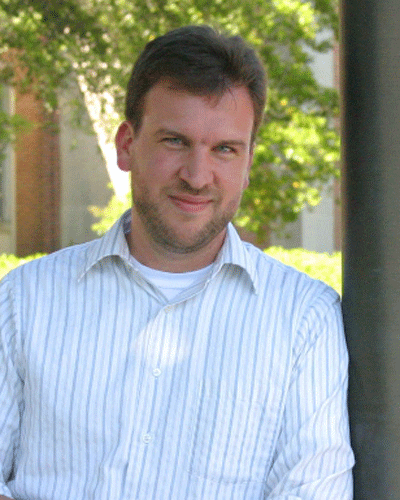Super Bowl study: Fan bases see more flu, flu-related deaths
Before you head off to that Super Bowl party you may want to read this study -- and wash your hands.
Assistant Professor for Economics Nicholas Sanders, along with two colleagues from Tulane University - Charles Stoecker, assistant professor of global health systems and development, and Alan Barreca, associate professor of economics - studied the public health consequences for communities whose football teams make it to the Super Bowl.
Stoecker, Sanders and Barreca analyzed 35 years of county-level vital statistics data from 1974 to 2009 for areas with professional football teams across the U.S., comparing influenza mortality both across regions and across years of varied local team success. They found a pattern of increased influenza infections, leading to deaths from influenza, in areas with football teams that make the playoffs and the Super Bowl that year. The increase is largest among those over 65, a group historically most vulnerable to the disease.
 The researchers noted several plausible mechanisms for the effect, including increased socialization and contact during large gatherings for watching or attending the games, which presents a higher opportunity for disease transmission – a lot of people in close quarters can translate to spreading germs. Fans also travel for postseason play, mixing with other travelers and returning home, raising opportunities for local infection. The effect is worse when game timing coincides with peak of the influenza season. “Mitigating influenza transmission at gatherings related to large spectator events could have substantial returns for public health,” the team noted in its study.
The researchers noted several plausible mechanisms for the effect, including increased socialization and contact during large gatherings for watching or attending the games, which presents a higher opportunity for disease transmission – a lot of people in close quarters can translate to spreading germs. Fans also travel for postseason play, mixing with other travelers and returning home, raising opportunities for local infection. The effect is worse when game timing coincides with peak of the influenza season. “Mitigating influenza transmission at gatherings related to large spectator events could have substantial returns for public health,” the team noted in its study.
See the findings in the team’s working paper, “Success is Something to Sneeze at: Influenza Mortality in Regions that Send Teams to the Super Bowl.”
William & Mary News talked with Sanders about the study.
Why did you choose to look at this correlation between a major sporting event and a communicable disease?
We wanted to know how much casual interaction among the population mattered when talking about the spread of influenza. Flu transmission is generally about close proximity and contact with carriers. Understanding how changes in proximity and casual interaction alter the spread of the flu can help us better plan to prevent future outbreaks. We clearly can't run controlled experiments where we have sick people try to infect healthy people, so we needed something that would naturally shift the degree of casual socialization. The increased interaction that happens around the Super Bowl, like Super Bowl parties and going out to crowded restaurants and sports bars to watch your favorite team, provided us an interesting way to look at the question of increased socialization and the spread of disease.
As an economist, what do you see as the most significant finding of this study?
I've always thought one of the most interesting things about economics is the study of externalities: how the decisions and actions of individuals end up affecting those around them. In this case, we find a lot of the additional flu mortality comes from populations over the age of 65, those that are historically most susceptible to flu outbreaks. This isn't necessarily the group that's going out to sports bars and parties. But when people increase their contact with others, they increase the chances that they become flu carriers, and that means a higher probability that sensitive groups come into contact with someone carrying the flu.
Your study revealed a clear cost to public health, what other impacts did you find?
An interesting finding was that the size of the effect didn't vary across winning versus losing regions. We take that as suggestive evidence that changes in activity patterns around the game, like playoffs and parties, rather than any health effects coming from celebration after a team victory. We also found the largest effects when the Super Bowl took place closer to the height of flu season, and in years when the flu strain was particularly virulent.
Did your study reveal any surprising findings?
We were surprised to find cities that host the Super Bowl didn't see similar increases in flu mortality. After all, you have a lot of travelers coming together, traveling through airports and interacting with each other in football stadiums and local bars, hotels and restaurants. All that adds up to a lot of increased potential for the spread of contact-based disease. But historically, the Super Bowl takes place in cities with warmer, more humid weather, like New Orleans or Miami. And regions with warmer weather are less amenable to flu transmission in the first place. So it may be that the location of the game helps prevent increases in disease transmission in game-hosting cities.
What do you hope city officials and individuals will take from this study?
The spread of disease can change substantially when we have increased social interaction, and those effects go beyond the individuals doing the socializing. Someone getting vaccinated and practicing good hygiene, both easy ways of helping reduce the spread of infections, helps not just themselves, but also everyone else they come into contact with, both at these social events and afterward.














